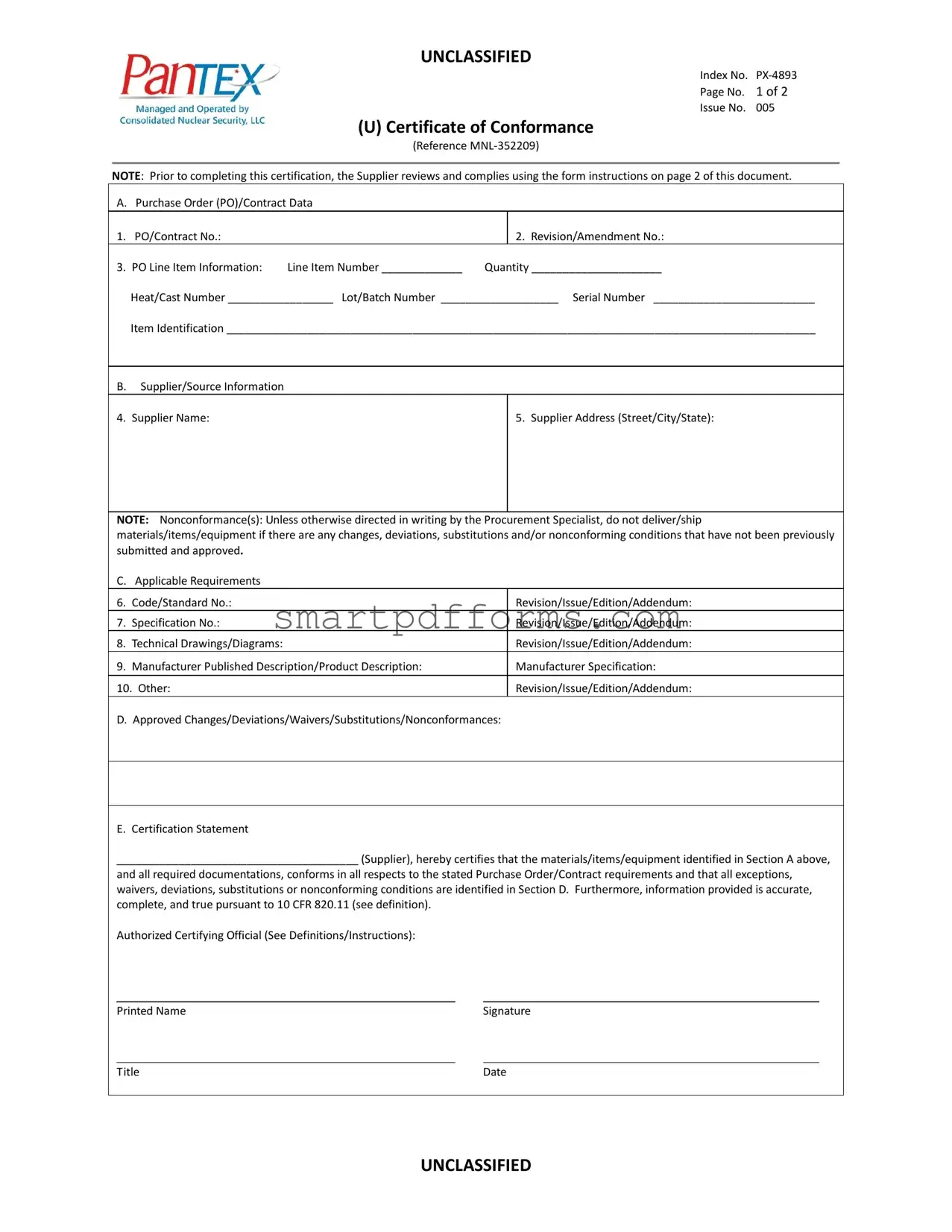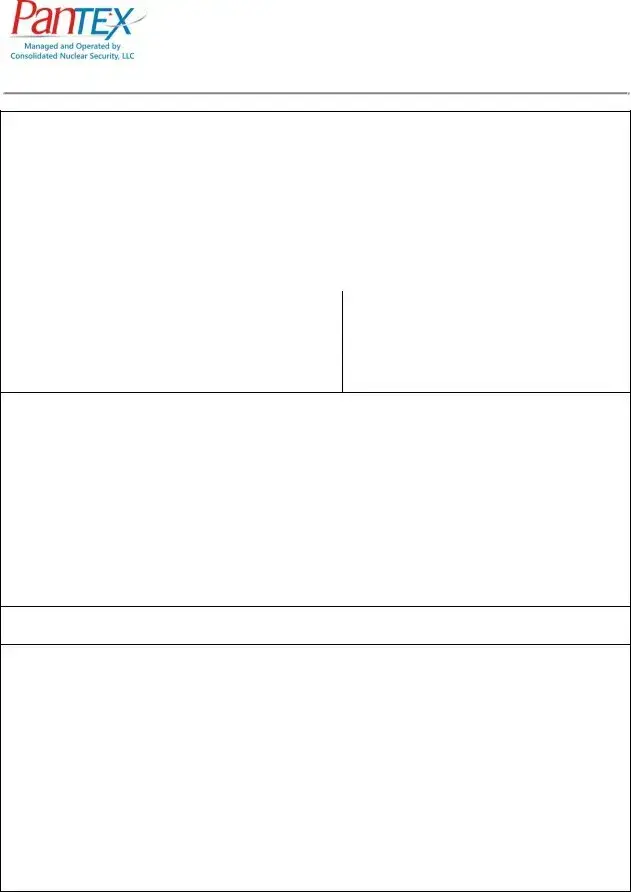UNCLASSIFIED
Index No. PX-4893
Page No. 2 of 2
Issue No. 005
(U) Certificate of Conformance
(Reference MNL-352209)
Instructions
Prepare a Certificate of Conformance (C of C) addressing each PO line item, Contract Deliverable, or each partial shipment. Unless otherwise specified, the C of C accompanies each shipment. All applicable form entries are completed.
A Supplier system-generated C of C may be attached and referenced and contains all applicable information required by the CNS Pantex PX-4893 form, specifically the information requested in Sections A, B, C, D and E.
Definitions
Authorized Certifying Official - The certification is attested to by an authorized representative of the supplier; and the certification system, including the procedures for completing, reviewing, and approving the certificate are described in the Company’s administrative control system or Quality Assurance program.
Certification - The act of determining, verifying, and attesting in writing to the qualifications of personnel, processed, procedures, or items in accordance with specified requirements.
Certificate of Conformance - A document signed or otherwise authenticated by an authorized individual certifying the degree to which items or services meet specified requirements.
10 CFR 820.11 - Procedural Rules for DOE Nuclear Activities, Subpart “A”, Information requirements. The regulation states: Any information pertaining to a nuclear activity provided to DOE by any person or maintained by any person for inspection by DOE are complete and accurate in all material respects.
No person involved in a DOE nuclear activity conceals or destroys any information concerning a violation of a DOE Nuclear Safety Requirement, a Nuclear Statute, or the Act.
Section A, Purchase Order (PO)/Contract Data
Entry 1 Enter the complete CNS Pantex PO or Contract Number.
Entry 2 Enter PO/Contract Revision or Amendment Number, (if applicable).
Entry 3 Enter as applicable, the PO Line Item Number (i.e., 1, 2, 3), quantity, heat/cast number, lot/batch number, serial number, and item identification.
Section B, Supplier/Source Information
Entry 4 Enter the legal Supplier company name, as stated on the PO or Contract.
Entry 5 Enter the Supplier business address, as stated on the PO or Contract.
Section C, Applicable Requirements
Entry 6 Enter the applicable design code/standard number and applicable revision, issue, edition, or addendum.
Entry 7 Enter the applicable specification number and applicable revision, issue, edition, or addendum.
Entry 8 Enter the applicable technical drawing/diagram and applicable revision, issue, edition, or addendum.
Entry 9 Mark the applicable box manufacturer published description/product description or manufacturers specification.
Entry 10 Enter other applicable requirements documents and applicable revision, issue, edition, or addendum.
Section D, Approved Changes/Deviations/Waivers/Substitutions/Nonconformances
Enter any approved changes. Reference change documentation control numbers as applicable. (Attach additional pages if necessary).
Section E, Certification Statement (see definitions)
Enter the Company name (or commonly used acronym).
Print or type the authorized company certifying officials name, title, and date.
Sign or otherwise authenticate by company certifying official.
Transmittal:
CNS Pantex, LLC
Fax: 806-477-3891
Attn: SUPPLIER QUALITY
Or e-mail with a PDF file. supplierquality@pantex.com
Place a copy with the shipment.


